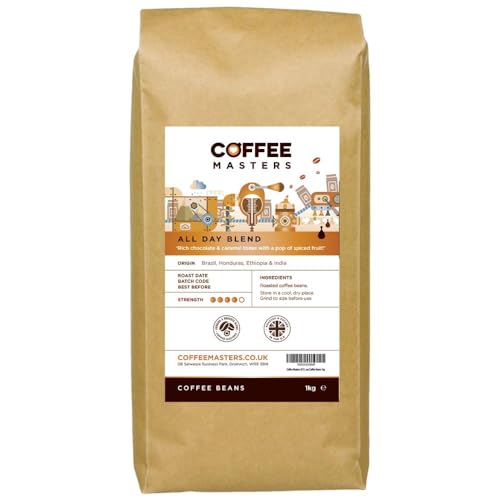10 Things That Your Family Taught You About Types Of Coffee Beans
페이지 정보
작성자 Felix 작성일24-12-15 23:21 조회4회 댓글0건관련링크
본문
 types of coffee beans (like it)
types of coffee beans (like it)Behind every cup of coffee that we drink, there are carefully graded bean. These beans are evaluated in accordance with their size, color, shape and density.
The AA grade is given to coffee beans that fulfill the criteria mentioned above, with the exception that they are not allowed to have more than 3 defects (quakers). These are typically Kenya AA beans.
Arabica
Arabica coffee beans are also referred to as Coffea Arabicica and are the most well-known coffee in the world. According to the legend, coffee was discovered by the goatherder of Ethiopia after he observed that his herd was more full of energy when they consumed the fruits of the plant. This led him to experiment with roasting and brewing the seeds, creating the beverage we know and love to this day.
Although a variety of coffee plants are available There are only two species that are used as the base for all our favorite coffees: robusta and arabica. The flavor of the final drink is typically more appealing when you drink the robusta variety.
There are many different arabica cultivars, with each possessing its own distinctive flavour profile. Two of the most famous varieties are Typica and Bourbon from which all other varieties of arabica were developed either through natural mutation or deliberate crossbreeding. Scott Labs developed the SL28 cultivar in Kenya which is famous for its distinct chocolaty flavor.
The flavor of an arabica variety varies on the conditions under which it was planted, and also how it was handled and roasted. The type of shade trees receive can have a significant effect on the final product.
Robusta
Robusta coffee beans (Coffea canephora) are the second most well-known variety of coffee beans. These beans are utilized in the majority of instant coffees, and contain twice as much caffeine than Arabica Coffee Beans. They are also used in numerous espresso blends, notably for caffe latte and cappuccino.
The Coffea Canephora plant originated in Sub-Saharan Africa, but it has since been grown all over the world. It can thrive at lower elevations, and can withstand higher temperatures than Arabica coffee plants, which makes it a better choice for farmers. Vietnam is the world's largest producer of robusta, followed by Brazil and Indonesia.
The robusta plant is a good coffee however it's not the most popular among cupping enthusiasts due to its bitter taste and burnt-rubber aroma. Many large coffee companies employ arabica beans to make their top products since it's regarded as a lower-quality coffee.
The demand for premium coffees is growing, and small roasters are experimenting to take advantage its superior qualities. Our Valhalla Java coffee and Death With Coffee coffee are two examples. Both are exceptional robustas that blend with arabica to create the perfect balance of flavor and strength. These beans are from Uganda in a country where robusta has been cultivated for a long time. Learn more about these coffees.
Liberica
Liberica coffee beans are rare and rarely used throughout the globe. They account for less than 2% of global coffee consumption and are often overlooked since they don't have the same amount of caffeine as Arabica and Robusta do. However, these beans possess distinctive taste that many coffee enthusiasts find appealing.
Despite being extremely rare, Liberica coffee beans are still very popular in many parts of Asia. They are especially common in Malaysia and Indonesia where there is an extensive Muslim population. In these countries the coffee industry has been robust for a long time. Drinking a cup of coffee following a prayer is a part of their customs.
The background of Liberica coffee began in the 1890s when a global epidemic of rusty coffee leaves killed most of the world's arabica crop. This triggered coffee producers to find an alternative species that could thrive in tropical climates. They soon discovered the Liberica plant.
Liberica plants have a high quality coffee beans tolerance for diseases and pests, which made them an ideal substitute for the ruined arabica crop. Liberica can also thrive in lower altitudes as well as hot temperatures which allows it to thrive in Southeast Asia's climate. Liberica beans are used to make the majority of the coffee that is produced in the Philippines and Indonesia.
Excelsa
Although it's not common for cafe coffee beans drinkers to find excelsa beans, they are now gaining the reputation of having a distinct flavor. According to Komal Sable of South India Coffee Co. who is a fifth-generation coffee beans types farmer the beans have a teardrop-like shape, however they are smaller. However despite this resemblance to the family it's important to understand that excelsa is technically not a separate species.
As such, it's a little ambiguous as to the best way to classify excelsa beans. classified, and it's this confusion that has largely been at the root of the beans' lack of presence in the contemporary world of coffee. Many growers, roasters and brewers don't know how to properly cultivate and use these beans.
It's the individual's responsibility to decide if they like the flavor of excelsa. it could take a while to find the right blend. It's important to be open-minded and try every kind of coffee until you discover the one you like. In this way you'll be able to experience the full variety of possibilities these unique beans have to offer. This is an adventure worth the effort.
댓글목록
등록된 댓글이 없습니다.
